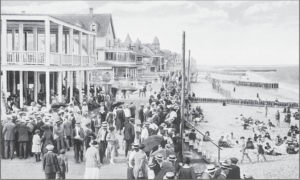How the Other Half Lives

Immigrant family staying in an immigrant enclave
Jacob Riis was a Danish immigrant who combined photography and journalism to show poverty in different parts of America. In these images, Riis portrays the life of immigrants living in tenements and how the slums were treated as a taboo subject for wealthy Americans. The idea that one half of the world does not know how the other half lives, is a theme for this image because many Americans did not want to know the lives of immigrants since it did not directly impact them or their lifestyle. Riis took many images of immigrants and published them to expand Americans knowledge of the lifestyles of immigrants, and how they were being treated unequally in the labor force and with their housing preferences. The increase in the immigrant population was a turning point for the United States economy and the extension of the workforce since the influx of immigrants allowed for more cheap labor and to fill the unskilled worker positions. This increase in immigrants also increased the stock of capital and the amount of money in the circular flow of economic activity for the United States.
Boardwalk looking South from Ocean City

This image shows men, women, and children shopping and enjoying the Ocean City Pier.
This image is part of a larger text that shows the transformation of Ocean City Maryland and how the boardwalk became a hub for affluent Americans to visit once vacations became a popular activity. As Americans were making more money, the national identity of the United States became a mass consumption society that would spend money on vacations, trips to see a movie, and on items that were not a priority. This shift changed how Americans viewed money and participated in the economy. Many women joined the workforce and immigrants played an important role in the growth of the economy with this shift in consumption practices. Groups of people who were unable to participate in the mass consumption felt they were not considered Americans since they were not given economic freedom to purchase items that they were not necessities. Many Americans were very prosperous during the 1920s and it was a common practice to flaunt one’s wealth and use a majority of their income for the purchase of consumer products. The expansion of credit in the 1920s allowed for more the sale of more cars and consumer goods that were considered luxury goods before.
